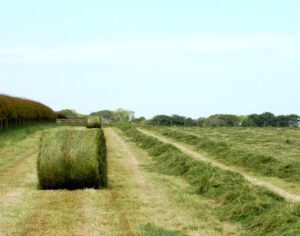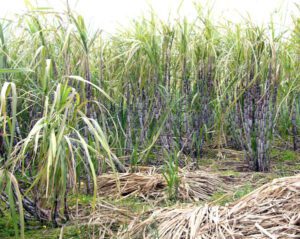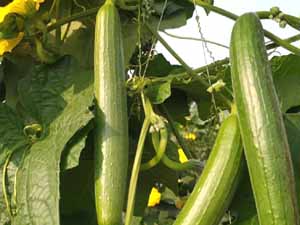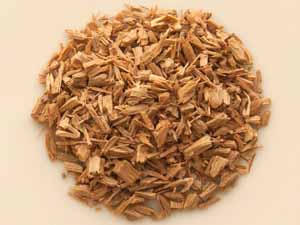Before starting crop farming business, it is necessary to assess the available resources. As a conscious farmer, you will have to evaluate the amount of water, land, and the means and labor available. The following vital points will be the choice of crops and the purpose of their cultivation.
You can start cash crop farming for making money, personal use as well as for export. In addition, crops can be grown as livestock feed and also for preventing soil erosion.
Depending on the purpose, you have to choose the right plant species. It is also necessary to assess how the climatic conditions in your area will affect the selected crop’s production.
Demand for your products, the equipment you need, and the availability of markets are also important parameters to consider before starting commercial crop farming business.
However, this is not the whole list of things to do for a budding farmer. This guide will help you to learn how to start crop farming and what resources you will need to increase crop yield.
Why Start Crop Farming
You can start a crop farming business for a variety of reasons. Perhaps this is a lifelong dream for some people and actually a good opportunity to cover the existing demand and earn money for another. At the same time, whoever opens a crop farming business may have an innovative concept or an innovative interpretation of an old one.
Of course, the reason may also be a simple desire to connect with nature and the earth. In such a case, starting a farm is an opportunity to support biodiversity from an environmental, ethical point of view. Each farmer has their reasons, and in this case, there are no wrong options.
How Much do Farmers Make?
Commercial crop farming can be a profitable business. According to the USDA ERS, the net profit of the farm’s cash crop is $192,500. As for the livestock farm, this industry brings in between $5,900 and $347,000. Profit depends on many factors, which is why its range is so broad.
One of the main factors in the industry is, of course, the kind of crops and products you produce. The region and climatic conditions also have a strong influence on the profitability of the farm.
Profits can only be maximized by developing a strategic approach. Strategy is important because many crops are seasonal, and animals only breed at certain times of the year.
Critical Resources for Crop Farming Business
Critical resources for starting and operating a profitable crop farming business are listed here.
Water
This is the primary resource of agriculture related business, so evaluate how things are with water before choosing a crop. It is necessary to calculate whether there is enough water for irrigation and irrigation systems and whether there is natural water, wells on your site.
Consideration should also be given to rainfall and water quality. Also, assess whether the crops will be able to adapt to the available water source.
Land and soil
Before starting a farm, it is necessary to assess the size of the site and its accessibility for equipment and workers. Assessment of the condition of the soil is no less critical. Determine the soil type, overall fertility, and actual nutrient content.
You can also divide the land into several zones to isolate crops from grazing and limit the access of strangers and neighboring animals to the fields.
Funds
Formulating a good business plan will give you access to funds, including loans and various grants. Calculate the funds for planting the crop and estimate the capital intensity of the crop. It is essential to consider the time after which you will sell the product and make a profit.
For example, if you choose to grow an olive, your olive garden will only profit in a few years. But profit from various vegetables can be obtained throughout the year.
Labor
The labor required to build and maintain your crop farming business is another essential item for a budding farmer. Assess what equipment you need and whether you need manual work. When recruiting, it is also necessary to consider whether the crop production on your farm interferes with other aspects of farming.
If you decide to use the equipment, is it available, or do you need to rent it? To use the machinery, you will need fuel and drivers with specific skills depending on the culture.
Which Crop to Plant?
Deciding what crops to grow can be a challenge. However, you should not despair.

That’s where help from an experienced agricultural economist comes in handy and advice from a seed supplier.
Climate Factor
The climate can promote the growth of the crop or, on the contrary, destroy it. So you need to know your region’s environment, the amount of precipitation, and the characteristics of the soil. The success of your crop production venture will depend on these factors.
Depending on the weather conditions, you can choose drought-tolerant crops such as millet or sorghum. These crops can also be used as livestock feed. If your area is humid, sugarcane or bananas are good choices.
End-use Factor
A crop can be most beneficial if it provides income, improves the soil, and becomes animal feed. In some regions, farmers also grow other plants between perennial crops.
This practice makes it possible to stabilize the soil and improve the penetration of water into the ground. Cover crops can also be of great benefit. These crops include, for example, legumes, which increase the nitrogen content of the soil. It is also food for people, and you can use it to feed cattle.
Price Factor
The price of agricultural products is based on domestic supply and demand, depending on the domestic pricing policy. The final consumer price is also influenced by the nature and deficiencies of agricultural markets. The Bureau of Food and Agriculture Policy has released a report that shows crop trends in South Africa for 2018–2027. There are significant changes in field crops in this region.
The report shows how soybeans and yellow corn, primarily used for animal feed, are expanding as white corn’s staple food. These changes were due to increased demand for feed grains for herd renewal after a drought and low-profit margins for grain producers.
Steps to Start Crop Farming Business
Here we are trying to shortly describe about the steps for starting crop farming business.
Know Your Soil
Healthy soil is something you need to take care of if you want to get high yields. First, you need to find out what type of soil you are dealing with to choose the suitable crops for growing later. You can do a soil analysis to see what needs to be improved.
This analysis requires a sample taken from a small pit on a farm. Send samples to the laboratory and inquire about the type and quality of the soil. The type can be sand, clay, silt, or a combination of these three. When we talk about quality, we are discussing determining the level of nutrients, including potassium, nitrogen, sulfur, and organic matter.
Learn Your Climate
Climate is also an essential factor. It also determines the crops that you can grow. If you choose a crop not suitable for the climate, it may not produce crops and cause a significant loss. You can also learn about some environments and get advice from other farmers in your area.
Do Market Research
Once you have chosen the right crop for your farm, you need to think about the market. Again, you can do a little research yourself about leads and distribution channels.
You can even visit local markets, talk to customers, and meet local producers, even targeting a specific product. It will help you find out what products are missing in the market.
Choose the Crop
Once you have become familiar with the climate in your area and determined the type of soil, you can choose the types of crops for which the conditions are suitable. The choice should also be made based on the resources available and what product you ultimately want to sell. Do some research to find out what crops are in demand in the market.
Draw up a Business Plan
If you are a small farmer who did not inherit the farm, you should develop a business plan, as you will need it to access finance. Finding money will be crucial to your go-to-market strategy.
A business plan is a formal document that is also a decision-making tool. Even if you don’t need a loan, this is a great way to put your goals on paper and assess how realistic they are. The business plan can also calculate the cost of production.
Register Your Business
Take a look at your government’s web page. You may need a license, permits, or rights for your business. The need for such documents depends on what and where you want to sell.
You may not need this, but it’s worth checking out. You can register a company online through a bank or CIPC. Registration can take several weeks.
Start Slow & Expand Gradually
There is a lot to learn when you start, but you shouldn’t get upset about small failures or rush. You can experiment a bit to see what works best for your farm. Use your time to good use and learn the basics because each task will allow you to learn something new and not repeat mistakes in the future.
Market Your Product
The promotion method depends on the consumer of your product. There are several points to consider when promoting. Consider whether the product will benefit manufacturers as an ingredient. Perhaps your product can be sold directly to consumers or through a store. And also, consider the possibility of selling online.
Final Thoughts
There are many ways to start your own crop farming business. Each farmer will face their own challenges and experiences. It’s natural, as each farm is different. You can use these guidelines as a starting point, as it is often the most challenging part to get started. Learn and experiment with some helpful hints. Hope this guide has helped you! Good luck & may God bless you!







Very informative and simple methods that can be applied by a non-agriculturalist